Elbow Dysplasia in a young Rottweiler
On assessment, Chloe was found to have crepitus (crackling in the joint) of her elbow; an uncomfortable Teres Major, one of the front leg muscles; and a click at her right shoulder. It was unclear whether it was Chloe’s shoulder or elbow that was causing her discomfort, and we were concerned about elbow dysplasia, common in her breed. Further diagnostics were needed to help identify joint problems and changes in the joint, so Paws in Motion referred Chloe back to her family veterinarian for X-rays.
The X-Rays, or radiographs were sent digitally to a radiology specialist in the US for examination, as specialists are experienced and able to see early subtle changes in bones and joints. They confirmed that Chloe had elbow dysplasia in both of her elbows! The right leg was clearly the one causing discomfort at this time. Elbow dysplasia is typically seen in larger dog breeds and dogs with this condition often limp. Chloe’s head bob is also a common sign seen in dogs with a painful front leg as they use their head to lift up and take weight away from the sore leg when stepping on the ground.
Chloe had laser therapy on both her elbow joints and to the tight, overworked muscles which we used to help her compensate for the discomfort she was feeling. We also used manual therapy such as massage, stretching and joint range of motion. Chloe’s owner continues with daily massage and heat packs at home, alongside restricted exercise. This was reassessed when Chloe came in for her physiotherapy sessions.
Once the elbow discomfort was under control, therapeutic exercises, including digging, were introduced to Chloe to help strengthen her muscles. Gradually her exercise could be built up from short walks on a flat surface, to one hour walks on undulating terrain. Chloe was often a ‘moving target’ during her physiotherapy sessions as she enjoyed all the attention, licking everyone within tongue striking distance, as well as chasing any shadows.
Two months after starting physiotherapy, Chloe’s muscles and joints were more comfortable and she was walking without the characteristic head bob. She was walking for an hour with no stiffness or lameness but she was tired afterwards. After three months, Chloe was walking well with her elbows much more comfortable. Chloe has now returned to her full activity and is enjoying playing with other dogs again.
相關產品
Assisi Loop®消炎儀器
HK$ 2880
This site is protected by reCAPTCHA and the Google Privacy Policy and Terms of Service apply.





